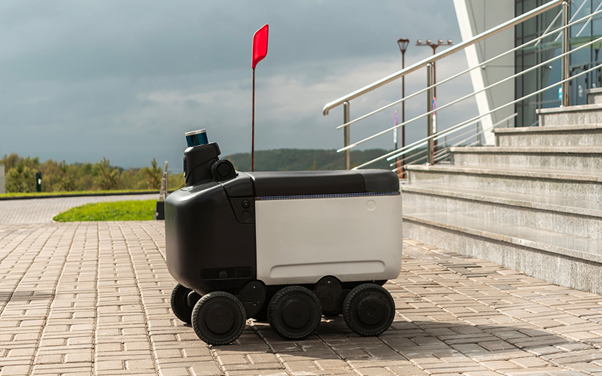
Autonomous devices are moving from pilot projects to daily operations in complex facilities. Organisations now view robotic security systems as a practical way to extend coverage, while autonomous mobile robot solutions provide consistent patrols that feed actionable data into smart building security systems with AI. When people, processes, and platforms work together, buildings become safer without adding unnecessary strain to teams.
Persistent Coverage That Reduces Blind Spots
Fixed cameras see only what is in front of them. Robotic security systems add mobile viewpoints that move through lobbies, corridors, and car parks, recording from multiple angles and heights. Because autonomous mobile robot solutions follow planned routes and adapt to live obstacles, they reduce gaps in coverage and arrive faster at areas that deserve attention.
AI Analytics That Turn Video Into Decisions
City buildings produce more footage than any team can review in real time. Modern building security systems with AI analyse streams for anomalies such as loitering, tailgating, or unusual heat signatures. When a pattern triggers an alert, robotic security systems forward precise clips and locations to operators, who can verify events quickly instead of searching through hours of recordings.
Safer, Quicker Incident Response With People in the Loop
Human judgment remains central to security. When distance or safety is an issue, operators can communicate through the robot while autonomous mobile robot solutions use onboard audio, lights, and maps to direct officers to occurrences. Because robotic security systems record every move, training gets better with each cycle and after-action reviews are factual.
Sensor Fusion That Detects More Than the Eye
Modern platforms carry cameras, lidar, microphones, and environmental sensors. Smart building security systems with AI combine these feeds to detect smoke, spills, or blocked exits alongside security risks. Autonomous mobile robot solutions escalate only when thresholds are exceeded, which reduces false alarms and protects trust in the system.
Integration With Access Control and Building Services
Robotic security systems do their best work when integrated with doors, lifts, and visitor systems. The robot requests access, rides lifts safely, and confirms that a door relocks after passage. Smart building security systems with AI log each transaction, while operators receive a simple timeline that shows where the unit moved, what it observed, and which actions followed.
Resilience, Safety, and Compliance By Design
Facilities demand predictable tools. Autonomous mobile robot solutions plan charging windows around peak movement and switch to safe modes when crowds gather or power dips. Robotic security systems maintain audit trails, retain media according to policy, and support privacy by masking faces where required, so compliance works in practice rather than as paperwork.
A Phased Roadmap That Proves Value Early
Successful programmes start small and expand with evidence. Teams pilot one route, agree baselines for detection and response, and then scale to additional floors or sites. Smart building security systems with AI provide the metrics, while robotic security systems supply the repeatable routines that make results dependable and easier to budget.
Change Management, Training, and Stakeholder Trust
Technology succeeds when people understand its purpose. Clear signage, short demonstrations, and simple FAQs help occupants see how autonomous mobile robot solutions support safety without intruding on privacy. Operators need hands-on practice that covers safe driving zones, escalation rules, and how to hand a case to facilities or emergency services. Smart building security systems with AI build acceptance by offering transparent logs that show what the robot recorded, how the alert was verified, and which corrective action was taken. Facility managers should hold short stakeholder reviews each quarter to share results, adjust routes, and agree on sensible retention periods for media. Robotic security systems become a part of everyday life rather than a novelty when feedback loops are regular and documentation is clear. Confidence increases with each successful patrol.
Conclusion
Autonomous patrols, integrated analytics, and disciplined workflows now define building protection. By combining robotic security systems with autonomous mobile robot solutions and the governance provided by smart building security systems with AI, organisations move from reactive monitoring to planned resilience. The result is clearer situational awareness, faster responses, and a safer experience for everyone who uses the building. These benefits come without increasing the workforce or compromising the comfort or privacy of the tenants.
To receive a building-readiness audit that includes a lift and door integration check, a privacy-by-design data plan, and a costed charging and docking layout, contact KABAM Robotics.






